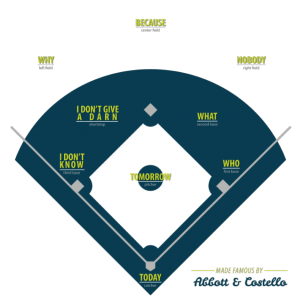Unclear roles, responsibilities, and decision-making processes are some of the biggest causes of delays, rework, frustration, and confusion in any organization that relies on teamwork to make the dream work. The same is true in nonprofits. Maybe even more so, because we tend to shortchange valuable self-reflection and planning time in favor of direct service to our clients.
This is the fourth post in a series on project management for nonprofits. First, we pointed out that you are, in fact, managing projects, whether you realize it or not. Then, we stressed the importance of teamwork in project planning. In our last post, we highlighted a tool for identifying the ways in which your project tasks depend on one another and should be sequenced. In this post, we’re sharing a tool for clarifying roles, responsibilities, and decision-making processes among your project team.
Who’s Doing What?
Once you know who is on your team and what tasks your projects require, now you’ve got to figure out who is doing what. Seems straightforward, right? But how many times have you been involved in a project that’s now four steps down the road when you bring in a team member who says, “Wait, when was that decided? Why wasn’t I involved in that conversation?” or “Who signed off on that?!” Beyond just assigning to-do items, a project plan considers who needs to be consulted on each step and who has the final authority to approve the work and decisions at each step.
I learned this one the hard way. I had been working closely and collaboratively with a program officer in an organization on designing some new tools and processes for their programs. After seeking feedback from this person, I made adjustments each step of the way. And then, wham! The first time the program officer presented our work to the executive, it met with disapproval and we had to re-work much of what we’d done. I was working under the impression that the program officer had the authority to make decisions and approve each piece of our work, but boy, was I wrong!
The Responsibility Matrix
Enter, the Responsibility Matrix, a simple tool that outlines who on your team should be Responsible for, Supporting, Consulted on, and Approving each task in your project. Those are just four common types of responsibilities found in Responsibility Matrices. Other roles can include those who need to be kept Informed or those who are accountable, for example.
| Task | Sarah | Fred | Cheryl | Jamal |
| Research vendors | R | S | ||
| Review and select vendor | C | C | A | |
| Set up demonstration | R | |||
| Attend demonstration | R | R | R |
If I had used one of these tools on the project I described above, I would have known that the executive needed to be informed at more frequent intervals and that they needed to give final approval on certain steps before we proceeded. Lesson learned! I use one of these on all my big projects now!
For more, check out this resource!

